Germany has unleashed a “To-Do List” to enable the country to lift, or at least scale down the lockdown, scheduled to end on April 19. The government hopes with the list of measures to be implemented, people could return to their normal life. Since its March 22’s lockdown, the Europe’s largest economy has been suffering from a meltdown and is tipped to enter recession this year.
Basically, the German government has identified 3 primary steps to be taken as its exit strategy. First, it’s a mandatory that everyone wears a mask in public. Second, public gatherings will be limited. Third, tracing of infection chains will be expedited. The proposal documents say the measures should be sufficient to keep the number of people infected by each person below 1.
For this plan to work, mechanisms will be put in place to track more than 80% of people with whom an infected person had contact within 24 hours of diagnosis. Those infected and the people they had contact with will be quarantined, either at home or in hotels. When that is achieved, schools will be able to reopen on a regional basis and strict border controls will be relaxed.
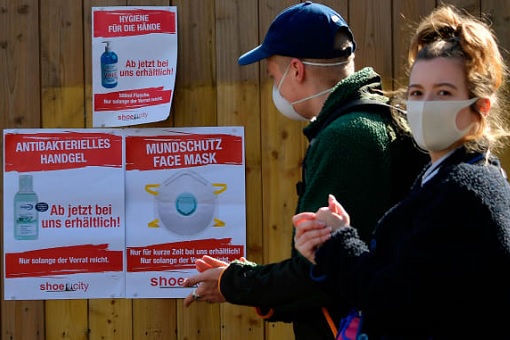
The exit strategy paper unveiled by Germany assumes the Coronavirus pandemic will last until 2021. But the country isn’t the only one in the European Union who is thinking ahead. Widespread testing is one of many steps to exit lockdown gradually in Europe. The UK is considering “immunity passport”, a certificate declaring that the holder is no longer at risk of contracting Coronavirus.
Even though lifting or relaxing a lockdown could backfire and trigger a new wave of Covid-19 cases, the European Union (EU) also recognises that if the lockdown continues for too long, its economy will enter an even more prolonged downturn. It’s already estimated that the EU could take up to 2 years to return to its pre-Coronavirus GDP (gross domestic product) levels.
So, does the backdoor government of Muhyiddin have a similar exit strategy to ensure the country’s economy could pick up as quickly as possible? Based on the reactions from the bloated 71 ministries (including newly promoted Special Envoy to the Middle East, Hadi Awang) so far, it appears everybody is happily enjoying their fat salaries while watching Netflix at home.

With the new infection cases remain stubbornly at 3-digit figure on a daily basis, it’s hard to see how Malaysia could end its MCO (movement control order), which was supposed to end on March 31, but extended to April 14. The only good news is the high number of recoveries. But the Health Ministry director-general Dr Noor Hisham Abdullah could only do so much.
Dr Noor Hisham Abdullah is not a policymaker or a lawmaker, let alone a politician. He’s just a civil servant who somehow has proven to be more efficient, effective and professional than his boss, Health Minister Adham Baba. But it seems the clueless government is passing the buck to Dr Noor, depending entirely on him to tell the government whether the lockdown can be ended or otherwise.
Hence, Dr Noor should be very careful when dealing with the politicians. If he says the MCO can be relaxed because the infected cases did not “spike”, but the situation gets worse later, he will get all the blames. On the other hand, if everything works accordingly, you can bet your last dollar that all the 71 incompetent ministers will suddenly appear in their rush to shamefully claim credit.
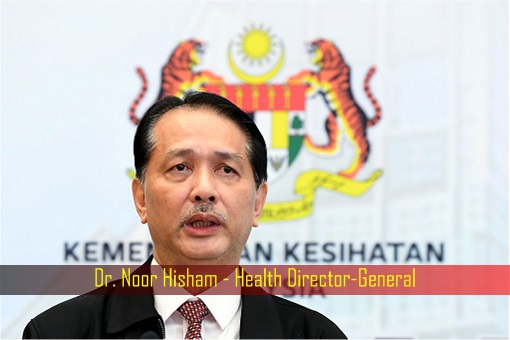
Federal Territories Minister Annuar Musa has already hinted that the current lockdown could be extended after its expiry on April 14. The country continues to register new death(s) every day – from the first 2 deaths (March 17) to 62 deaths (April 6). That essentially means an average death toll of 3 persons every single day for the last 21 days since the first death started.
On Saturday (March 4), Inspector-General of Police Abdul Hamid Bador revealed a disturbing data – there were a jaw-dropping 40,000 people involved in the Coronavirus chain of infection, involving up to about 11,000 “Tabligh” members who attended a religious gathering at a Sri Petaling mosque – Masjid Jamek – in Kuala Lumpur from February 28 and March 1.
Apparently 16,000 people had attended the gathering. Confusing the matters, there were conflicting data from the police, Senior Minister Ismail Sabri Yaakob and Health Ministry. For example, when Ismail Sabri claimed the police was still tracking down 3,800 Tabligh members, police said 95% had already come forward, but the Health Minister said 5,084 had yet to step forward for tests.
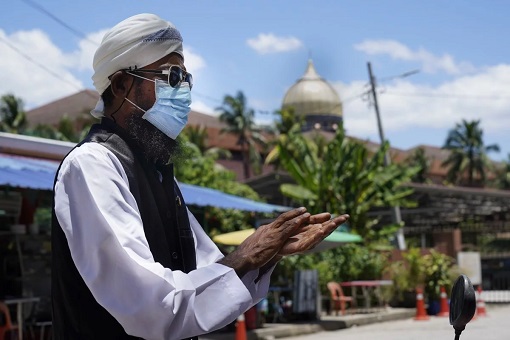
Yet, despite in possession of the data, including the home addresses, telephone numbers and identity card numbers of the 40,000 people in the web of infection, the police continue to pussyfoot in getting all of them to be screened and tested. If the authorities and politicians refuse to temporarily put racial and religious politics in the cold storage, how could they draw up an exit plan like Germany?
For example, the state of Johor police chief Ayob Khan Mydin Pitchay said of the 2,086 Johor participants who attended the Tabligh gathering, only 1,220 of them had undergone screenings in hospitals. To the remaining 866 attendees, the police chief – like a broken record – merely warned that they would face strict action by the authorities.
Sure, a church gathering (Feb 26 – 28) in Sarawak and a wedding (March 6 – 7) in Bangi, Selangor, contributed to the clusters of Covid-19 cases in the country. However, Health Ministry director-general Dr Noor Hisham Abdullah said both clusters have been contained. The cluster that has yet to be contained is the Tabligh cluster, which forms the largest cluster (42.8%).
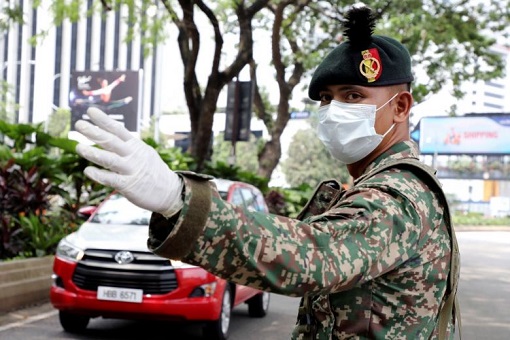
Ending the lockdown will depend on the ability of a country to “flatten the curve”, follows by a downward trend. According to the World Health Organization (WHO), the Covid-19 cases in Malaysia are expected to peak in mid-April, which is about a week from now. But that was just a prediction. Can the health ministry, or even the government, says the curve has been flattened now?
What will the government do if the chart does not spike even after mid-April, but continue to register 3-digit new cases? Will that mean the testings and screenings have barely scratched the surface because the Tabligh and other clusters are still growing to the next generation indefinitely? What if the chart does not spike after mid-April but follows by a downward trend?
Will the government then declare the worst is over and the lockdown can be lifted or relaxed to enable certain sector of business to resume gradually? Muhyiddin government cannot continue blaming two Chinese men caught fishing to put food on the table, or a Chinese cardiologist jogging to keep healthy, or Heineken brewing its beer at 10% capacity as excuse that Coronavirus refuses to go away.

It’s time the backdoor government tells the people about its exit strategy so that the public and private sectors, schools, restaurants, hotels, pubs, retailers, transport services and whatnot know the expectations. Muhyiddin’s senior ministers and police cannot keep shouting about MCO stubborn defaulters as the reason the lockdown may be extended, but at the same time admits 99% compliance.
Perhaps the incompetent government has not heard about exit strategy before, let alone crack their head to prepare for one. Making it compulsory for everyone to wear a face mask is the responsibility of the government, not Health Ministry director-general Dr Noor Hisham Abdullah. By the way, what happens to the so-called “free mask” promised by PM Muhyiddin recently?
If there is any exit plan at all, the government should draft out a comprehensive definition of limited public gatherings. When the lockdown is eventually lifted or partially lifted, life will not be the same again. While social distancing has to be maintained, it can’t be as ridiculous as one person per car. People need to go to school, get their hair cut or have their car repaired.
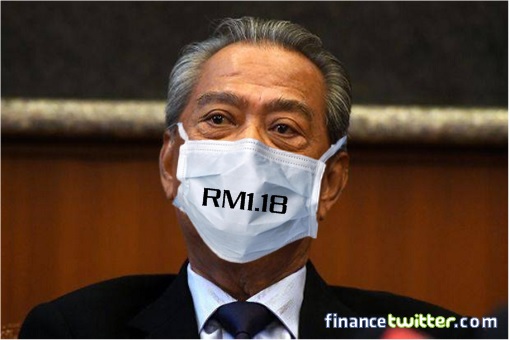
While the happiest group of people is the civil servants who get free cash on top of their guaranteed monthly salary and job security while napping at home, thanks to the recently announced RM250 billion stimulus package, the government’s piggy bank will soon runs dry. If business and commerce do not resume soon, there could be millions of jobless workers in the private sector.
There’s little doubt that the virus is still out there. The objective is to gradually lift the lid on controls while watching what will happen with the Coronavirus spread. Certain states or districts or areas that are not Covid-19 hotspots should be prepared for an exit strategy. Perhaps the government hopes to see zero infection cases like China. But what if it does not happen even after another 2 extensions? - financetwitter



No comments:
Post a Comment
Note: Only a member of this blog may post a comment.